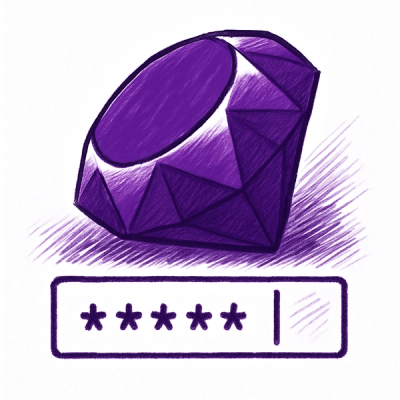
Security News
npm Adopts OIDC for Trusted Publishing in CI/CD Workflows
npm now supports Trusted Publishing with OIDC, enabling secure package publishing directly from CI/CD workflows without relying on long-lived tokens.
react-native-websocket-self-signed
Advanced tools
provides support for secure WebSocket (wss://) connections with self-signed certificates. This package allows developers to seamlessly establish secure WebSocket communication in their React Native applications, even when using self-signed SSL/TLS certifi
This package provides support for establishing WebSocket (wss://) connections in React Native applications while bypassing SSL/TLS certificate validation. It allows developers to create secure WebSocket connections with self-signed certificates by explicitly bypassing the standard certificate validation process. This is particularly useful in development environments or internal applications where self-signed certificates are used, and strict certificate validation is not required.
🚨 Bypassing SSL/TLS certificate validation can introduce significant security risks, including exposure to Man-in-the-Middle (MITM) attacks.
🔒 This package should only be used in development environments or controlled internal applications where security risks are minimal.
❌ Do NOT use this package in production environments where data security is critical. The potential for sensitive information to be intercepted is high. Always prioritize using proper SSL/TLS certificate validation in production settings.
npm install react-native-websocket-self-signed
If you are building an iOS Expo development build and want to use ths library in the development environment, you need to disable expo-dev-client's network inspector because it is intercepting network requests. Note that the network inspector is automatically disabled on production builds and so this library would function properly on production builds without following process
npx expo install expo-build-properties
{
"expo": {
"plugins": [
[
"expo-build-properties",
{
"ios": {
"networkInspector": false
}
}
]
]
}
}
npx expo prebuild
From version 0.4.0, support for multiple concurrent WebSocket connections was added.
Each connection is managed independently using WebSocketWithSelfSignedCert.getInstance(url).
import WebSocketWithSelfSignedCert from 'react-native-websocket-self-signed';
const [connected1, setConnected1] = useState<boolean>(false);
const [connected2, setConnected2] = useState<boolean>(false);
const [messages1, setMessages1] = useState<string[]>([]);
const [messages2, setMessages2] = useState<string[]>([]);
const [error1, setError1] = useState<string | null>(null);
const [error2, setError2] = useState<string | null>(null);
const [payload, setPayload] = useState<string>('Hello, World!');
const targetWebSocket1 =
Platform.OS === 'android' ? 'wss://10.0.2.2:8443' : 'wss://localhost:8443';
const targetWebSocket2 = 'wss://echo.websocket.org';
const ws1: WebSocketWithSelfSignedCert = useMemo(
() => WebSocketWithSelfSignedCert.getInstance(targetWebSocket1),
[targetWebSocket1]
);
const ws2: WebSocketWithSelfSignedCert = useMemo(
() => WebSocketWithSelfSignedCert.getInstance(targetWebSocket2),
[targetWebSocket2]
);
const connectToWebSocket = useCallback(
(
ws: WebSocketWithSelfSignedCert,
setConnected: React.Dispatch<React.SetStateAction<boolean>>,
setMessages: React.Dispatch<React.SetStateAction<string[]>>,
setError: React.Dispatch<React.SetStateAction<string | null>>,
target: string
) => {
setError(null);
ws.onOpen(() => {
console.log(`WebSocket connection opened: ${target}`);
setConnected(true);
});
ws.onMessage((message: string) => {
console.log(`Received message from ${target}:`, message);
setMessages((prev) => [...prev, message]);
});
ws.onClose(() => {
console.log(`WebSocket connection closed: ${target}`);
setConnected(false);
});
ws.onError((err: string) => {
console.error(`Failed to connect to ${target}:`, err);
setError(`Failed to connect: ${err}`);
});
ws.connect({ Authorization: 'Bearer your_token' })
.then(() => {
console.log(`Connected to ${target}`);
setConnected(true);
})
.catch((err) => {
console.error(`Failed to connect to ${target}: `, err);
setError(`Failed to connect: ${err}`);
});
return () => {
ws.close();
};
},
[]
);
useEffect(() => {
const cleanup1 = connectToWebSocket(
ws1,
setConnected1,
setMessages1,
setError1,
targetWebSocket1
);
const cleanup2 = connectToWebSocket(
ws2,
setConnected2,
setMessages2,
setError2,
targetWebSocket2
);
return () => {
cleanup1();
cleanup2();
};
}, [connectToWebSocket, ws1, ws2, targetWebSocket1, targetWebSocket2]);
const sendMessage1 = () => {
console.log('Sending message to WebSocket 1:', payload);
ws1.send(payload);
};
const sendMessage2 = () => {
console.log('Sending message to WebSocket 2:', payload);
ws2.send(payload);
};
import WebSocketWithSelfSignedCert from 'react-native-websocket-self-signed';
const wsWithSelfSignedCert = new WebSocketWithSelfSignedCert();
const targetWebSocket = 'wss://example.com';
wsWithSelfSignedCert.onOpen(() => {
console.log('WebSocket connection opened');
});
wsWithSelfSignedCert.onMessage((message: string) => {
console.log('Received message:', message);
});
wsWithSelfSignedCert.onBinaryMessage((data: Uint8Array) => {
console.log('Received binary data');
const base64String = `data:image/jpeg;base64,${data}`;
});
wsWithSelfSignedCert.onClose(() => {
console.log('WebSocket connection closed');
});
wsWithSelfSignedCert.onError((err: string) => {
console.log('Error state updated:', `Failed to connect: ${err}`);
});
wsWithSelfSignedCert
.connect(targetWebSocket)
.then((data) => {
console.log('Connected to WebSocketWithSelfSignedCert', data);
})
.catch((err) => {
console.error('Failed to connect: ' + err);
});
return () => {
wsWithSelfSignedCert.close();
};
wsWithSelfSignedCert.send("message"));
You can check this whole example here.
To run the example, start the WebSocket server by following the instructions provided in WEB_SOCKET_SERVER_FOR_DEV.md.
See the contributing guide to learn how to contribute to the repository and the development workflow.
MIT
Made with create-react-native-library
FAQs
provides support for secure WebSocket (wss://) connections with self-signed certificates. This package allows developers to seamlessly establish secure WebSocket communication in their React Native applications, even when using self-signed SSL/TLS certifi
The npm package react-native-websocket-self-signed receives a total of 243 weekly downloads. As such, react-native-websocket-self-signed popularity was classified as not popular.
We found that react-native-websocket-self-signed demonstrated a healthy version release cadence and project activity because the last version was released less than a year ago. It has 1 open source maintainer collaborating on the project.
Did you know?

Socket for GitHub automatically highlights issues in each pull request and monitors the health of all your open source dependencies. Discover the contents of your packages and block harmful activity before you install or update your dependencies.

Security News
npm now supports Trusted Publishing with OIDC, enabling secure package publishing directly from CI/CD workflows without relying on long-lived tokens.

Research
/Security News
A RubyGems malware campaign used 60 malicious packages posing as automation tools to steal credentials from social media and marketing tool users.

Security News
The CNA Scorecard ranks CVE issuers by data completeness, revealing major gaps in patch info and software identifiers across thousands of vulnerabilities.